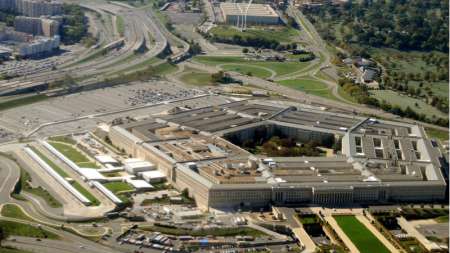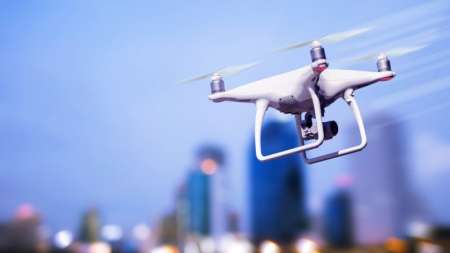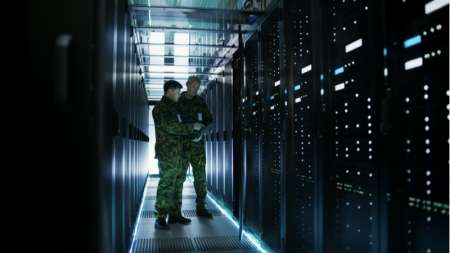The Defense Advanced Research Projects Agency (DARPA) announced its launch of the Air Combat Evolution (ACE) Program on May 8 to adopt artificial intelligence (AI) in air-to-air dogfighting combat. […]
The Defense Advanced Research Projects Agency (DARPA) announced its development of a new program to accelerate and scale software certification processes for military systems and platforms on May 3. […]
The Pentagon’s top research arm is working to build a hack-proof voting machine by combining something brand new with something old – specifically, secure open-source hardware and software using advanced cryptography on one end, and good old paper on the other. […]
Vector Launch, Virgin Orbit, and VOX Space are the Defense Advanced Research Project Agency’s (DARPA) qualifying competitors for the Launch Challenge, which aims to enable the military to launch on-demand small payloads into space. DARPA awarded $400,000 to each competitor that completed the qualification phase, and now the competitors will attempt to launch to low-Earth […]
The Defense Advanced Research Projects Agency (DARPA) will host its second annual Electronics Resurgence Initiative (ERI) summit in Detroit, July 15–17. ERI – a five-year, upwards of $1.5 billion investment to develop a specialized, secure, and automated electronics industry – has created collaborations among the defense industrial base, private electronics sectors, and academic researchers. DARPA […]
The Defense Advanced Research Projects Agency (DARPA) will begin accepting proposals for its fourth swarm sprint in its OFFensive Swarm-Enabled Tactics (OFFSET) program, according to an April 1 news release. […]
On Thursday, the Defense Advanced Research Projects Agency (DARPA) announced that it is going to fund research into changing the way that artificial intelligence learns language. […]
When it comes to getting artificial intelligence systems to be more “human,” robots apparently have to learn to walk before they can run.The Pentagon’s top research arm recently hit a milestone in enabling a machine to learn without having to go through a lot of reprogramming at each stage, like they do now. And they did it with a robotic limb teaching itself to walk. […]
The Defense Advanced Research Projects Agency (DARPA) recently launched Polyplexus, a social media platform to help speed the pace of U.S. technology development. […]
Representatives from the Defense Department (DoD) presented the department’s artificial intelligence (AI) program initiatives and need for collaboration with the private sector to accomplish them in a hearing before the Senate Armed Services Committee today. […]
The Department of Defense’s many artificial intelligence programs–currently over 600 and counting–generally share one stated goal: the blend of humans and machines working as a team, in which AI systems become “partners in problem-solving,” as opposed to our new overlords. Whether in jobs such as cybersecurity, analyzing reams of data, images, and video, operating swarms of drones, or disaster assistance, the idea is to have AI and machine learning systems that augment and improve what personnel can do. […]
It turns out a little knowledge can indeed be a dangerous thing.
That’s something the Army Research Laboratory (ARL) discovered when testing the value of artificial intelligence (AI) as an aid to battlefield decision-making. Researchers from ARL and the University of California, Santa Barbara, found in a series of test scenarios that people trust their own judgement more than they trust an AI’s advice. This was true even when an AI agent provided perfect guidance, and when ignoring that advice led to negative results. People might trust an AI personal assistant to recommend a movie or the best way to drive to the theater, but not so much when they have skin–or their own skin–in the game. […]
In late January, the Defense Advanced Research Projects Agency (DARPA) issued a solicitation to invite submissions of innovative basic or applied research concepts in neurotechnology. […]
The Defense Advanced Research Projects Agency (DARPA) Information Innovation Office will host a Proposers Day on Feb. 6 to provide information on a future Broad Agency Announcement about Guaranteeing AI Robustness against Deception (GARD) program. […]
Data can travel around the world in a blink of an eye and show up on practically any device, be it a networked PC, a phone, or some other mobile component. […]
The Pentagon’s plan to use machine intelligence to better manage the finite and increasingly crowded electromagnetic spectrum took a small leap forward last month, as the Defense Advanced Research Projects Agency (DARPA) hosted Phase 2 of its Spectrum Collaboration Challenge (SC2). […]
On Wednesday, the Defense Advanced Research Projects Agency (DARPA) will host a Proposers Day for leaders within the defense industry base to discuss further developing their five-year, $1.5B investment in an Electronics Resurgence Initiative (ERI) to further technological advancements for Department of Defense (DoD) needs. […]
The Pentagon wants to make ordering up a space launch as easy as hailing an Uber. […]
In a scene from the movie “The Matrix,” Carrie Anne Moss’ character calls to get a flight program for a certain kind of helicopter, and after a few blinks of the eyes, the program is installed in her brain and she’s ready to roll. The Pentagon’s lead research arm isn’t quite at that point yet, […]
Artificial intelligence (AI) machines can out-think humans when it comes to a lot of complex, fine-grained tasks, such as detecting signs of cancer more accurately than doctors can, or finding exoplanets based on “dimming effect” data from distant solar systems. But what they don’t have is good old common sense, the ability to apply its knowledge, and the experience to various tasks humans can do from childhood. […]
Defense Department CIO Dana Deasy said today that DoD is currently sorting through the FY 2019 budget allocation for the new Joint Artificial Intelligence Center (JAIC), and likely will be creating outposts for JAIC to spur outreach to members of academia. […]
Small drones have been a useful tool to the military for years, primarily as a way to provide on-the-spot surveillance. But as hardware and artificial intelligence guidance systems continue to improve, macro- and nano-drones are poised to begin playing a bigger role in contested areas as both friend and foe. […]
In the quest to keep the upper hand in the burgeoning field of artificial intelligence (AI), the Pentagon’s top research arm just put $2 billion in chips on the table to spur development of the third wave of AI technologies. […]
The Defense Advanced Research Projects Agency (DARPA) kicked off its new ‘AI Next’ campaign with a multi-year commitment to spend more than $2 billion on new and existing artificial intelligence programs to help create machines that can adapt to changing situations. […]
The idea that you can’t trust everything you see on the Internet is a conventional, if sporadically followed, wisdom. But as hackers become increasingly skilled and sneaky, as “fake news” officially enters the dictionary, and as fake video and fake audio become more of a thing, you might not necessarily be paranoid to wonder if you can trust anything. […]
The Pentagon is looking to get into the weeds with cyber defense, using artificial intelligence to hunt down attacks that may use the size and complexity of its systems to hide out while waiting to strike. […]
The Pentagon is looking to get on top of the next wave of artificial intelligence technologies through a fast-track contracting program that would bring new concepts from the drawing board to proof-of-concept within 18 months. […]
The Pentagon’s top research arm is sponsoring development of a first-of-its-kind software that can model the events that contribute to conflicts around the world, and, if not quite predict the future, at least offer a timely heads-up on what might happen next. […]
The possibilities of quantum computing have been floating on the horizon for a while now, at least since renowned physicist Richard Feynman dreamed up the idea in 1982. But like the horizon itself (at least in a world that isn’t flat), it always seems to recede despite all efforts to close in on it. Until now. […]
The White House’s planned advisory committee on artificial intelligence may or may not help keep the country at the forefront of technological innovation, but it is another sign that the government is getting more serious about the importance of AI and the potential threats of falling behind in the “AI arms race.” […]






















